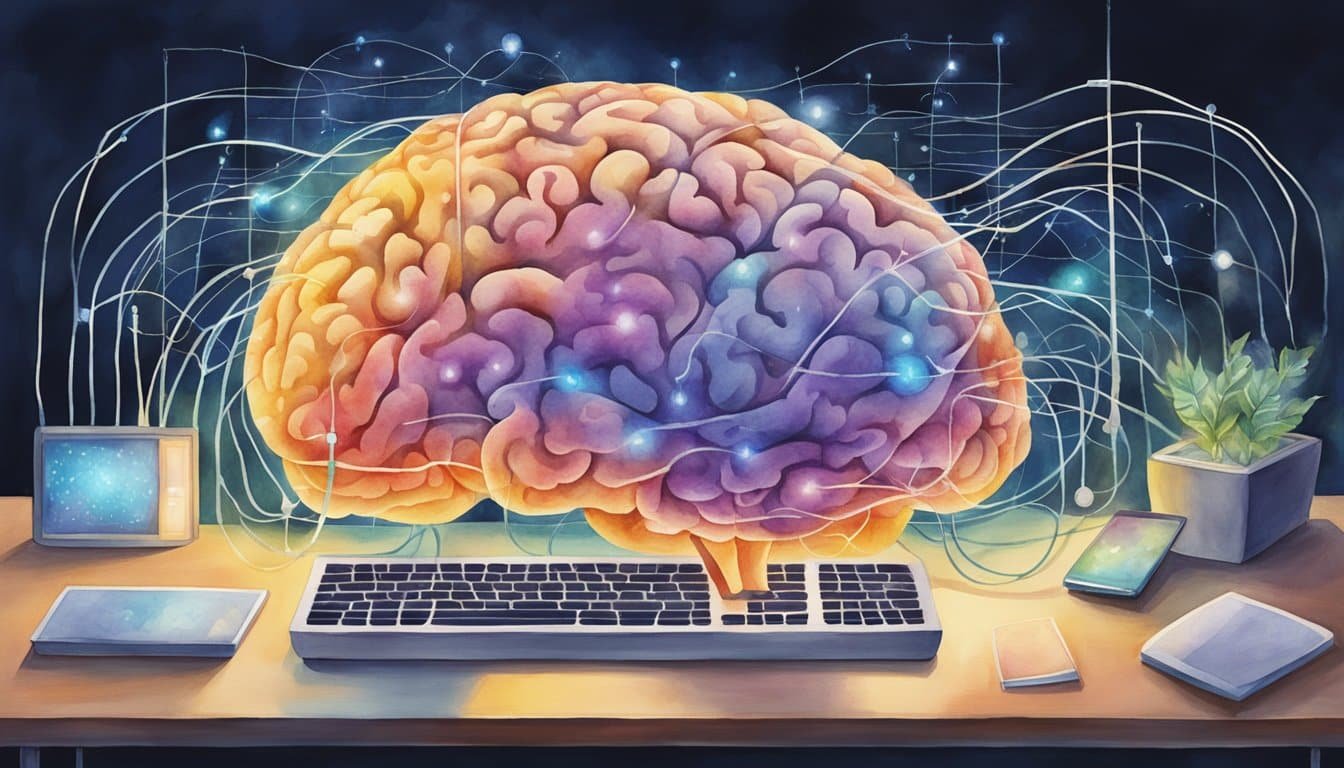Understanding the Second Brain
The term “second brain” intriguingly refers to the enteric nervous system (ENS), a pervasive network of neurons lining our digestive tracts. Far from being an auxiliary to the central nervous system, this complex mesh of over 100 million neurons in the gut has a profound impact on one’s mood, health, and even the way people think and remember.
Fundamentals of a Second Brain
The second brain comprises a massive, intricate network of neurons, neurotransmitters, and proteins that govern the gastrointestinal system. As an autonomous entity, it not only manages digestion but also communicates with the brain, affecting emotional wellbeing. The bidirectional communication highway between the brain and the gut, known as the gut-brain axis, opens up fascinating avenues for understanding how one’s diet, gut flora, and overall gut health can influence mood and cognitive functions.
Cognitive Benefits
Recent studies suggest the second brain plays a crucial role in maintaining mental sharpness and memory. By harnessing the knowledge of how the ENS operates, individuals can adopt diets or lifestyles enhancing gut health, which in turn may boost memory and cognitive function. Furthermore, tapping into the second brain could unlock creative potential, showcasing the power an external system has in driving internal cognitive processes including creativity and recall.
Building and Organizing Your Second Brain

In a digital world brimming with information, harnessing the power of a “Second Brain” implies creating a digital space that serves as an extension of one’s mind. It involves capturing ideas, organizing projects, and storing insights to bolster creativity and productivity, all without succumbing to information overload.
The PARA Method
The PARA Method stands for Projects, Areas, Resources, and Archives, and is a foundational system designed for organizing one’s digital life. It starts with Projects, which are defined by their specific outcome and time frame. Areas encompass responsibilities that need to be managed over time. Resources are thematic collections of information for reference, and Archives hold items that are important but not currently in use. By applying this method, individuals can streamline their workflow and shift from passive consumption to taking effective action. Notion and Evernote are popular digital tools that facilitate the PARA method by allowing users to customize their organization preferences for enhanced personal productivity.
Digital Tools and Apps
Choosing the right digital tools can transform one’s ability to collect, organize, and connect ideas. Notetaking apps like Evernote provide a storehouse for all kinds of data with flexible categorization. Notion, on the other hand, combines note-taking with a database-like functionality, making it intuitive and reliable for managing complex information structures. Other specialized applications like Readwise offer facilities to archive and distill digital notes, including ebook highlights and read later apps, enabling progressive summarization. Apps like Obsidian create connections within notes, reinforcing learning and sparking creativity.
Optimizing Information Flow
To prevent the stress of cluttered information, it’s crucial to streamline the intake and retrieval of data in the Second Brain. The process begins with Capture, where every noteworthy thought is noted down. Distillation comes next, where the information is condensed and the core ideas are highlighted. An effective workflow includes reviewing notes regularly and adapting them into an Intermediate Packet—a summarized bundle ready for immediate use. Lastly, establishing a Review routine ensures that the information remains current and useful. Learning to trust this external system relieves one from the mental burden, leading to improved emotional well-being and, interestingly, can draw parallels with how the enteric nervous system—a complex array of neurons and neurotransmitters in our gut—manages digestion and emotions, often termed the body’s “second brain.”
Explore more on the enteric nervous system as the body’s literal “second brain” and its fascinating functions in Building a second brain in the bowel. Interested in enhancing creative potential and productivity through the PARA method? Investigate further with Building a Second Brain.
Practical Applications and Outcomes

Turning the concept of a second brain from theory into real-world benefits involves two key areas: enhancing personal productivity and refining learning resources and workflow.
Enhancing Personal Productivity
A second brain empowers individuals to outsource their memory and thinking processes to external systems, often digital ones. They can manage their tasks, ideas, and projects more effectively due to the systematic organization. For instance, software tools like Notion or Evernote allow for the creation of databases where one can store everything from daily to-dos to long-term goals. This results in a clarified mind and an increase in focus on the tasks at hand, as one doesn’t need to remember everything.
Learning Resources and Workflow
When it comes to handling learning resources, a second brain acts as a cognitive scaffold. It enables a person to organize educational materials such as books, articles, and videos in a coherent fashion, often tagging and categorizing them for easy retrieval. An effective workflow utilizing a second brain includes systematic note-taking and regular review cycles, which facilitates deeper understanding and retention of new information. A properly maintained second brain can help trace the evolution of one’s thought processes and conceptual linkages over time, highlighting how understanding and knowledge have expanded.

